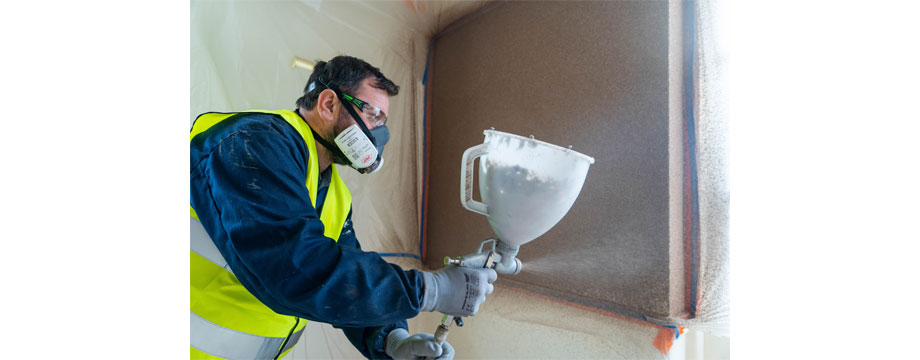On 20 March 2019 a new law came into force to ensure rented properties are ‘fit for human habitation’, meaning they are safe, healthy, and free from things that could cause serious harm. This new law, the Homes (Fitness for Human Habitation) Act 2018, helps tenants and landlords by making sure that their rental property isn’t causing them to live in dangerous or unhealthy conditions.
And according to The English Housing Survey for Housing Quality and Condition[1], 3.5 million occupied homes were not suitable and did not meet the Decent Homes Standard in 2020, with 4% having serious damp issues. Whilst 4% might not sound like a large number, it accounts for 941,000 houses. On top of this, the cost to the NHS to treat the impact of damp is approximately £38 million[2]. And landlords can also face high costs to carry out repairs, put right health and safety problems, or pay compensation to the tenant.

There are three types of damp, and its important to understand the root cause before being able to treat it effectively.
• Rising damp is caused by inadequate damp proofing or a complete lack of a damp-proof course in your walls. To combat the problem, most houses require a new damp-proof course to be installed.
• Penetrating damp is caused by water penetrating through walls, roofs, or windows. It’s important to identify where water is coming from to eliminate the root cause. This could mean repairs to your roof or windows, or it may be an issue with external walls.
• Condensation occurs when airborne moisture hits a cold surface. This moisture occurs naturally in the home through everyday activities, such as cooking, showering, and breathing. The moisture is held in damp, porous surfaces that provide the perfect environment for mould to develop.
The health risks with mould
Mould releases spores which produce allergens, irritants, and even toxic substances, which according to the NHS, can lead to allergic reactions, respiratory problems and even a weakened immune system. The risk is higher for babies, children, elderly people, and those who have existing problems with their skin, respiration, immune system, or are suffering from Long Covid.
Whether you’re a homeowner, landlord or housing manager, it’s clear that damp and mould are not something you should ignore. And older properties are at a greater risk of damp than newer homes as they tend to be less energy efficient.

How to combat mould
Ventilation can help to eliminate the issue - otherwise moisture will start to build up onto cold surfaces. This will lead to black mould spots appearing, eventually leading to more serious damp problems occurring.
Adding wall insulation helps to reduce condensation as it moves the dew point, reducing the risk of moisture condensing on cold surfaces. However, it is important to ensure that the walls are breathable as this prevents heat passing through walls whilst still allowing moisture to escape.
The downside of traditional internal insulation solutions is that they are typically applied at depths of 50 – 100mm, often causing small rooms to become even smaller. So, it becomes a trade off between saving space or eliminating the cause of damp. In essence, it is replacing one issue with another as the reduction in space could be contrary to the Minimum Space Standards.
Finding the solution
With damp and mould impacting indoor air quality, and increasing or aggravating the risk of allergic reactions, respiratory problems and immune issues that come with mould, finding a solution that prevents these in the first place is crucial.
SprayCork, from CorkSol UK, is a sustainable and eco-friendly sprayed cork coating for walls and ceilings that can eliminate penetrating damp and condensation forming on surfaces. It is an extremely thin coating, applied at 4-6mm with 2mm skim, which also increases the energy efficiency of the property, providing tenants a healthy and safe space to live, and piece of mind to the landlord.
The thin layer at which the product is applied makes it perfect for:
• Small rooms and tight spaces where thicker layers cause unacceptable reduction in room size.
• Properties with historic internal architectural details, which should not be concealed behind thick layers of insulation for conservation reasons.
• Properties on a tight budget, who do not want the extra cost, time and hassle of repositioning services such as electrical points and radiators.
1 https://assets.publishing.service.gov.uk/government/uploads/system/uploads/attachment_data/file/1088447/EHS_Housing_quality_and_condition_report_2020.pdf
2 https://www.itv.com/news/2021-11-10/poor-housing-is-costing-the-nhs-in-england-14-billion-a-year-data-shows
Images © CorkSol
- Log in to post comments















